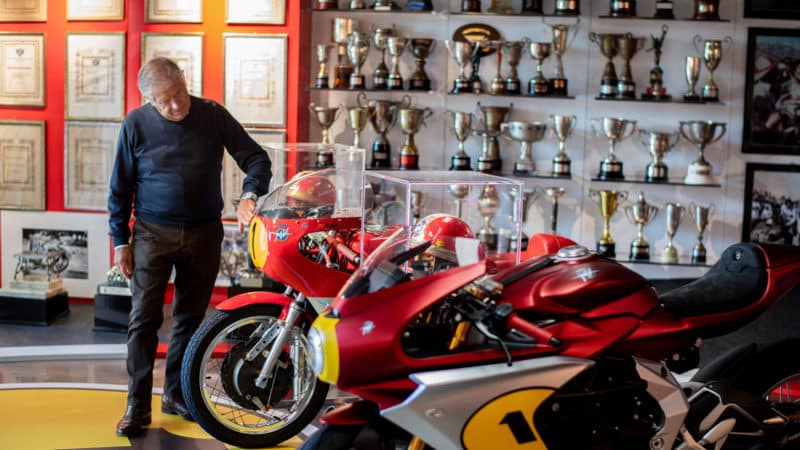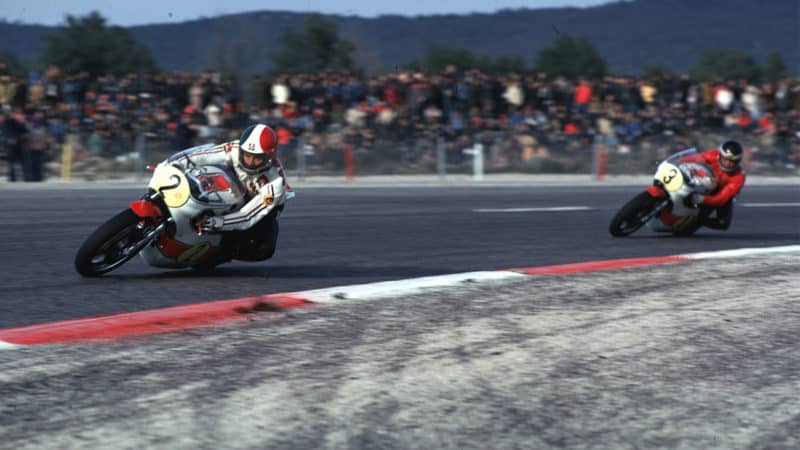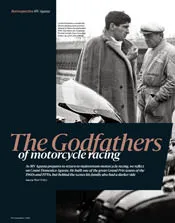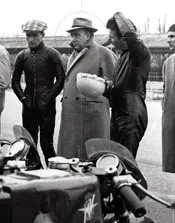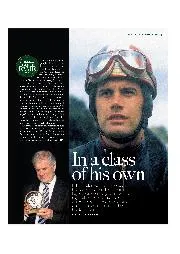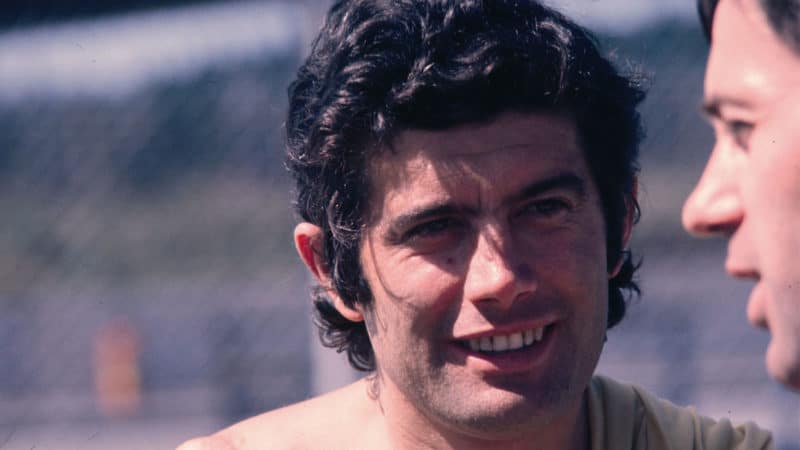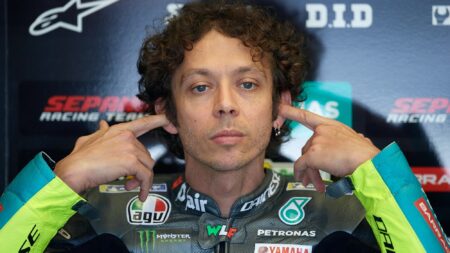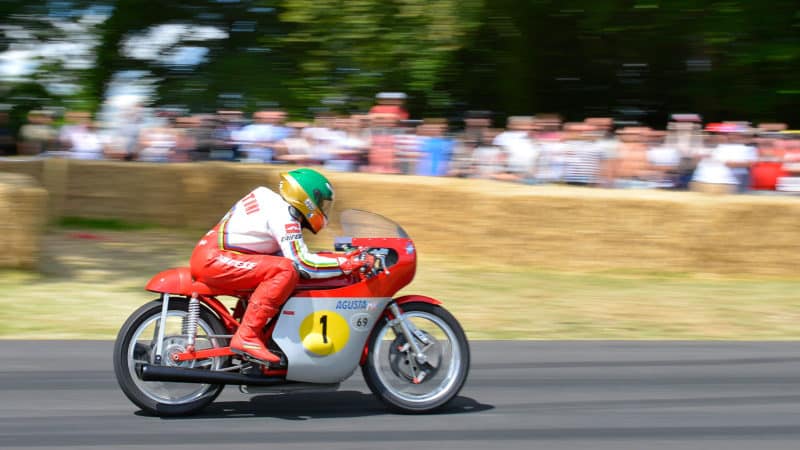In the early 1970s Agostini became the first to attract the not-inconsiderable financial backing of cigarette manufacturers who wanted to promote their products. Marlboro didn’t only fund Ago because he knew how to race a motorcycle but also because he was a part-time movie star and a full-time member of the jet set, so he exuded glamour, like a real-life James Bond.
Motorcycle racing never stops changing but perhaps we can make an overly simple contrast between the 1970s and now, which goes like this: in those days it was bravery, talent and mechanical sympathy for your engine and chassis. Now it’s talent, bravery and looking after your front-tyre pressure.
Motorcycle racing was certainly more romantic in those days. During the 1960s, when Agostini was winning everything on his all-powerful MV Agusta, American journalist Bob Ottum described Ago’s job thus: “to race and skid and crash and then make love and drink wine”. Ottum’s story was headlined, “Viva! But hide your women”.
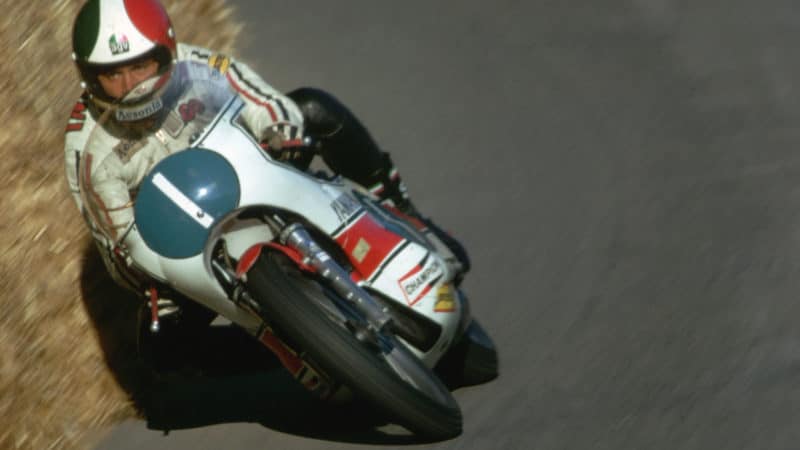
Ago flirts with the hay bales at Brno on his way to the 1974 350cc world title – there was never any doubting his bravery
Jean-Yves Ruszniewski/TempSport/Corbis/VCG via Getty Images
Which of today’s MotoGP youngsters – dazed and confused by hours and hours gazing at squiggly lines on computer monitors, pressing the flesh with sponsors and herded from here to there for autograph sessions, media debriefs (with idiots like me!), selfie sessions and everything else – wouldn’t sign up for Ago’s job?
But for better or worse, that life is no longer available to today’s motorcycle racers.
The wine, women and song must’ve been great, but Agostini did race during a hideously dangerous era, when grand prix racing routinely killed three, four or five riders each season.

